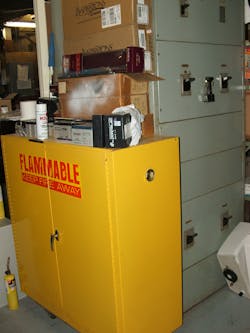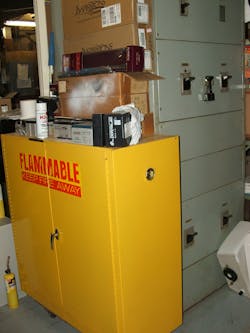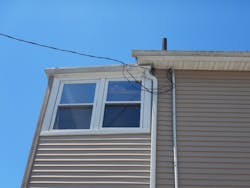What's Wrong Here? Hint: A Scary Switchboard Situation
How well do you know the Code? Think you can spot violations the original installer either ignored or couldn’t identify? Here's your chance to moonlight as an electrical inspector and second-guess someone else's work from the safety of your living room or office. Can you identify the specific Code violation(s) in this photo? Note: Submitted comments must include specific references from the 2023 NEC.
Hint: A scary switchboard situation
Tell Them What They've Won…
Using the 2023 NEC, correctly identify the Code violation(s) in this month's photo — in 200 words or less — and you could win an Arlington Industries 18-in. Slider Bar and plastic box for mounting between studs with non-standard spacing. E-mail your response, including your name and mailing address, to [email protected], and Russ will select three winners (excluding manufacturers and prior winners) at random from the correct submissions. Note that submissions without an address will not be eligible to win.
September Winners
Our winners this month were: Mark Varisco, P.E., lead electrical engineer for Engineering & Inspection Services, LLC, Metairie, La.; and Patrick Connolly, an EC&M reader and contest participant from Detroit. They knew these service conductors are installed way too close to the windows.
A person could easily open the window and grab those wires with their bare hands or decide to hang a plant basket from those wires. We certainly don’t want either of those things to happen. Section 230.9(A) requires service conductors to have a clearance of at least 3 ft from any windows designed to be open, doors, balconies, porches, fire escapes, stairs, or similar locations. This 3-ft clearance does not apply to conductors in a raceway or cable assembly having an overall outer jacket. The exception for Sec. 230.9(A) allows conductors run above the top level of a window to be less than 3 ft, but that exception does not apply to wires such as these drip loops, which are installed right next to the side of a window.
About the Author

Russ LeBlanc
Owner
Russ started in the electrical trade as an apprentice in 1985. He worked his way up to become a Journeyman Electrician and then eventually became a Master Electrician and Licensed Construction Supervisor. In 1999 Russ become an Electrical Instructor for The Peterson School of Engineering in Massachusetts where he developed his passion for teaching, and quickly became Department Head of Electrical Instruction. Russ has taught thousands of apprentices, electricians, engineers, inspectors, and other electrical professionals during his career as an instructor. He continues to provide electrical professionals with Electrical Code seminars, Arc-Flash Awareness training seminars and educational material through his LeBlanc Consulting Services in North Reading, MA whose specialty is educating electricians. He has been an active member of the NFPA Electrical Section and has authored hundreds of National Electrical Code proposals and comments which have become Code rules to improve the safety for the electrical industry. Russ is also an IAEI certified Electrical Inspector.
Please visit www.russleblanc.net for more information.


